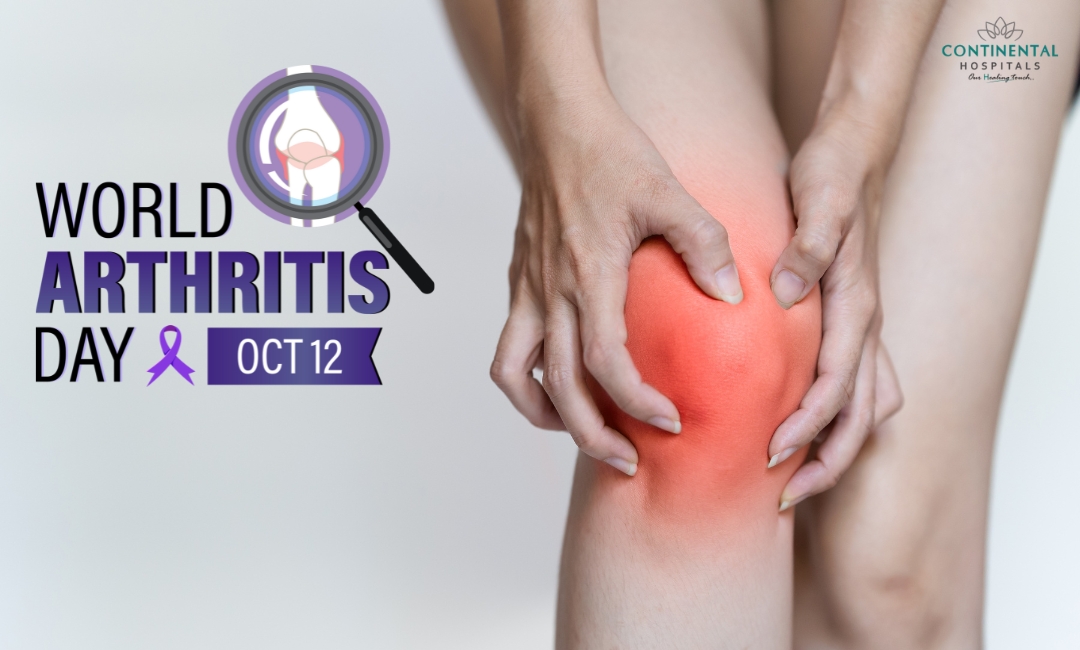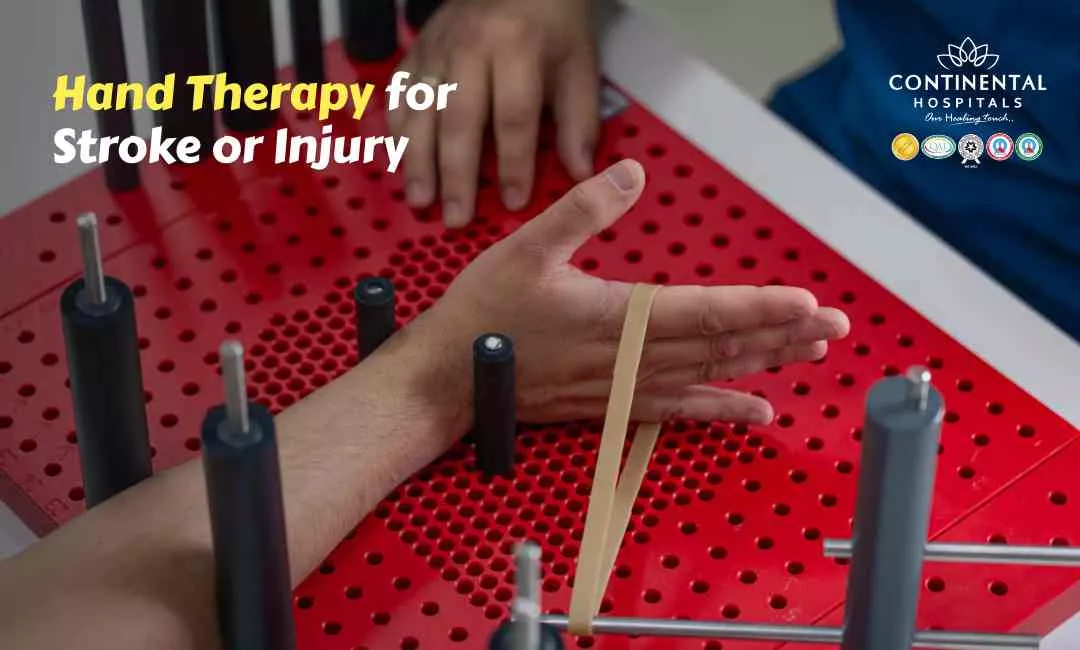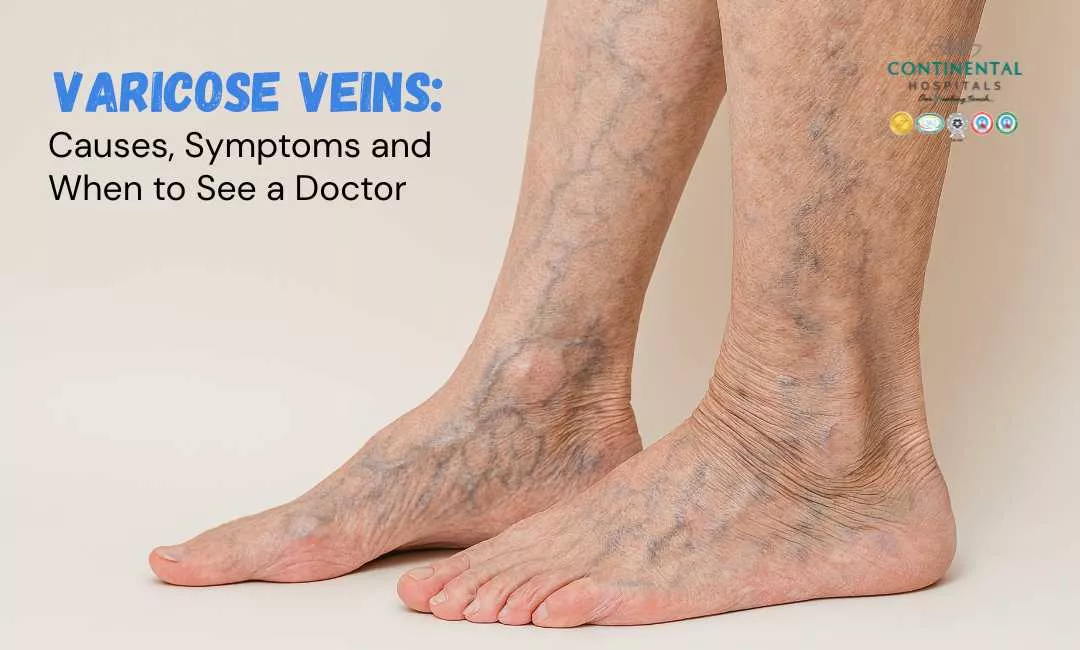Arthritis, a condition affecting millions of people worldwide, is a major source of pain, discomfort, and disability. World Arthritis Day (WAD), celebrated on October 12th each year, brings attention to the struggles faced by those with arthritis and aims to increase public understanding, promote early diagnosis, and advocate for better treatment and management.
What is Arthritis?
Arthritis is a term that refers to inflammation of the joints. It encompasses more than 100 different types of joint-related diseases and conditions, including osteoarthritis (OA), rheumatoid arthritis (RA), psoriatic arthritis, and gout. These conditions affect the joints, causing pain, swelling, stiffness, and a loss of function over time.
While arthritis can occur at any age, it is more common in older adults. Osteoarthritis, the most prevalent form, often develops as the cartilage in joints wears down with age, leading to pain and reduced mobility. In contrast, rheumatoid arthritis is an autoimmune disease that causes the body's immune system to attack the joints, resulting in inflammation and damage.
Importance of World Arthritis Day
Raises Awareness: Increases public understanding of arthritis, its symptoms, and long-term effects, encouraging timely diagnosis and treatment.
🥗 Healthy Plate Challenge
🍽 Add Your Favorite Dish
Pick Your 6 favorite foods, eat, and see the results.Drag & drop foods onto your plate.
Drop Food Here
Promotes Early Diagnosis: Highlights the importance of recognizing early symptoms, which leads to more effective management and prevents joint damage.
Highlights Global Impact: Emphasizes that arthritis affects millions worldwide, contributing significantly to disability and reduced quality of life.
Encourages Research and Innovation: Advocates for increased funding and research to develop better treatments, therapies, and potential cures for arthritis.
Empowers Patients: Provides valuable information on self-care, lifestyle modifications, and treatment options, helping individuals manage symptoms effectively.
Advocates for Policy Change: Pushes for healthcare policy improvements, ensuring better access to affordable treatments and support services for people with arthritis.
Promotes Global Collaboration: Fosters international cooperation, enabling sharing of best practices, resources, and support strategies for arthritis care.
Reduces Stigma: Corrects misconceptions about arthritis, combating societal stigma and fostering empathy for those living with the condition.
Builds Community Support: Creates a platform for patients, caregivers, and healthcare providers to connect, share experiences, and offer mutual support.
Global Impact of Arthritis
Arthritis affects more than 350 million people worldwide, and it is one of the leading causes of disability. According to the World Health Organization (WHO), musculoskeletal disorders, which include arthritis, account for 25% of all years lived with disability globally. In some countries, arthritis is the leading cause of work-related disabilities and absenteeism, leading to significant economic losses.
In 2024, it is estimated that the number of arthritis cases will continue to rise, particularly due to aging populations, sedentary lifestyles, and obesity—major risk factors for the development of osteoarthritis. For rheumatoid arthritis, genetics, smoking, and environmental factors play critical roles in disease onset. This rising prevalence highlights the importance of raising awareness, as early intervention can reduce complications and improve quality of life.
Common Types of Arthritis
Osteoarthritis (OA): The most common form of arthritis, often called “wear and tear” arthritis. It typically affects the knees, hips, and hands, causing joint pain and stiffness.
Rheumatoid Arthritis (RA): An autoimmune disorder that primarily affects the smaller joints, such as those in the hands and feet. Over time, RA can cause joint deformities and affect other body organs.
Psoriatic Arthritis: A form of arthritis that affects people with psoriasis, an autoimmune skin condition. It causes joint pain, swelling, and stiffness.
Gout: A form of inflammatory arthritis caused by the accumulation of uric acid crystals in the joints, often affecting the big toe, knee, and ankle.
Symptoms and Diagnosis
The symptoms of arthritis can vary depending on the type but typically include:
Joint pain and stiffness: Often worse in the morning or after prolonged periods of inactivity.
Swelling: Caused by inflammation in the joints.
Decreased range of motion: Stiffness may limit the movement of affected joints.
Redness and warmth: Especially in inflammatory types like RA and gout.
Diagnosis typically involves a combination of clinical evaluation, imaging (X-rays or MRIs), and laboratory tests (for autoimmune markers or uric acid levels). Early diagnosis is crucial to managing arthritis effectively, especially in inflammatory forms like RA, where delayed treatment can result in joint damage.
Advances in Arthritis Treatment
In recent years, significant advances have been made in the treatment of arthritis. The treatment goals for arthritis focus on reducing inflammation, relieving pain, preserving joint function, and preventing further joint damage. The following are key approaches:
Medications: Nonsteroidal anti-inflammatory drugs (NSAIDs), corticosteroids, and disease-modifying antirheumatic drugs (DMARDs) are commonly prescribed. For more advanced cases, biologic drugs and targeted therapies have shown success in controlling inflammation and slowing disease progression in RA.
Physical Therapy: Tailored exercise programs can strengthen muscles around joints, improve flexibility, and reduce pain. Therapists may also recommend assistive devices such as braces, canes, or splints to support weakened joints.
Weight Management: Maintaining a healthy weight is critical, particularly for individuals with osteoarthritis. Excess weight puts additional stress on weight-bearing joints like the knees and hips, exacerbating symptoms.
Surgery: In severe cases, surgical interventions such as joint replacement may be necessary. Hip and knee replacements are common procedures that significantly improve quality of life.
Complementary Therapies: Many people with arthritis find relief through alternative treatments like acupuncture, massage, or supplements like glucosamine and chondroitin. While more research is needed in these areas, they can be beneficial as part of a comprehensive management plan.
Role of Diet and Lifestyle
While there is no cure for arthritis, lifestyle modifications can greatly improve symptoms and slow the progression of the disease. Proper nutrition, regular exercise, and maintaining a healthy weight play vital roles in managing arthritis:
Anti-Inflammatory Diet: Foods rich in omega-3 fatty acids, such as fish, flaxseeds, and walnuts, can help reduce inflammation. Incorporating fruits and vegetables high in antioxidants, like berries and leafy greens, is also beneficial.
Exercise: Low-impact activities like swimming, cycling, and yoga can improve joint mobility and reduce stiffness. It’s important to find a balance between physical activity and rest, as overuse of joints can exacerbate symptoms.
Stress Management: Chronic stress can increase inflammation, making arthritis symptoms worse. Practices like mindfulness, meditation, and deep breathing exercises can help reduce stress and promote relaxation.
Supporting People Living with Arthritis
Living with arthritis can be challenging, but with the right support, individuals can lead fulfilling lives. Support groups, both online and in person, provide a platform for individuals to share their experiences, challenges, and coping strategies. Healthcare professionals, including rheumatologists, physiotherapists, and occupational therapists, play a crucial role in helping patients manage their symptoms and maintain independence.
World Arthritis Day 2024 provides an opportunity to raise awareness, educate the public, and empower individuals living with arthritis. While arthritis can significantly impact quality of life, advancements in treatment, early diagnosis, and lifestyle changes offer hope for managing the condition more effectively. By spreading awareness and advocating for better healthcare access, we can ensure that people living with arthritis receive the support they need to lead active and fulfilling lives.
Related Blogs:
.webp)














